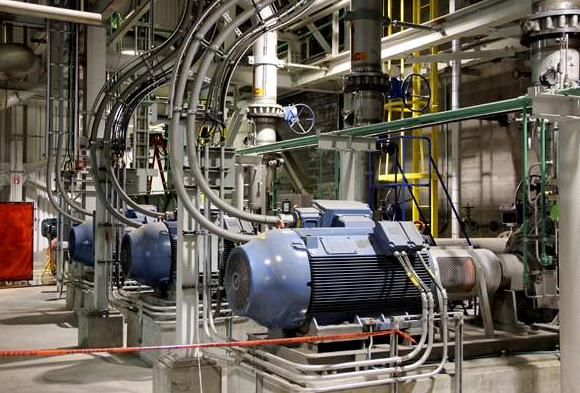The opening of the project at BD3 doesn’t mark the end of the carbon capture story but the beginning of a much longer saga that will see the continued use of coal power for much longer than we otherwise would.
That’s what Mike Monea said he believes when SaskPower’s president of carbon capture and storage initiatives spoke to media Oct. 2 during the grand opening of the much-anticipated carbon capture project at Boundary Dam Power Station.
“This plant is the world’s first, but it’s also the most expensive plant because it’s the first. Our next plant will be 30 per cent cheaper, and the next plant after that maybe 20 per cent cheaper,” said Monea. “We have to keep driving the costs down, so the rest of the world can use the technology and the know-how to clean up emissions.”
Premier Brad Wall spoke to the fact that the project isn’t just one that consumes coal but also produces commodities in carbon dioxide, fly ash and sulphuric acid that creates a revenue-generating model.
“We are taking, for wont of a better term, a pollutant in Saskatchewan and we’re getting paid for it. The people are getting paid for it because companies want to use (carbon dioxide) as a solvent to increase oil production. The point is that it makes the clean coal project much more viable,” said Wall
Wall said he couldn’t comment on the price SaskPower is selling the carbon dioxide for, citing confidentiality agreements, but said there was a “competitive” bidding process, which Cenovus Energy had won.
SaskPower would have to sell a lot of carbon dioxide to recover the complete cost of the project, and while there isn’t a clear number from the Crown corporation determining what they are charging Cenovus for the benefit of having exclusive buying rights to the captured carbon, there are hints the commodity is С����Ƶ sold for somewhere between $20 and $30 per tonne.
At $25 per tonne, SaskPower would have to sell 56 million tonnes to net $1.4 billion. But just because selling carbon dioxide makes the project “economic” according to the politicians, doesn’t mean the sale of captured toxins has ever been expected to pay for the project as a whole. Monea said he doesn’t think they will actually recoup the cost on this project by selling goods.
He said with future projects, as costs decline, the gap between capital costs and the revenue potential will likely be much narrower. Wall said as the technology moves forward, the sale of CO2 won’t be as necessary as it is today.
“I think you’re going to see next generation technology bring the price down where the CO2 (sale) is less important to the overall economics of it, and the capture units themselves will be enough without the sale,” the premier added.
Monea said the technology at BD3 can be used by other utility companies across the world.
“We have 22 countries in town now to observe this plant starting up. Over the last two days we’ve had workshops and presentations, and the general community is very, very excited about what has happened here,” said Monea. “SaskPower, we’ll have to find out from our government how they wish us to commercialize or take this technology, and not necessarily technology but know-how and construction, globally.”
“We want to co-operate and to open it up to those countries that are still looking at coal. We do want to look at commercialization opportunities. We want to strike a balance between sharing this technology with other countries that are interested and also realizing that (when you’re) the first in on a new technology there’s a bit of a premium cost wise,” said Wall, noting there are lots of opportunities in European countries interested in carrying their coal operations into the future.
“The good news for other countries is that the next technology is going to be more cost effective.”
In terms of scale and capacity, Monea said future projects can and should only be bigger.
“It’s very scalable. You don’t want to do anything smaller than this,” Monea said. “This is a million tonnes. The next one is going to be two million. It gets better as we build bigger.”
Wall said the successful completion of this project provides a future for carbon capture and coal power in Saskatchewan and around the world.
“It’s on the table where it never would have been before. It’s on the table along with natural gas,” said Wall, who added natural gas comes with greater risk in terms of commodity pricing. “When you factor in that risk and the fact that we can now capture the CO2, sell it and also meet the federal (environmental) guidelines, retrofitting an existing coal plant over and above this one, is now on the table.
“The capture unit is working, and the CO2, as of 3 p.m. yesterday afternoon, was sold to an oil company and moved through the pipeline. It’s mission accomplished in terms of the plant working, the electricity С����Ƶ generated from coal, the CO2 С����Ƶ captured by the capture unit, and then the CO2 moving through the pipelines to the oilfields where it’s used for enhanced oil recovery before it’s stored,” added Wall.
“With respect to what’s next and the next generation of this technology and a confirmation that it is going to compete with natural gas and other forms, there’s more work to be done, and we’ll know more down the road. But so far, so good.”




